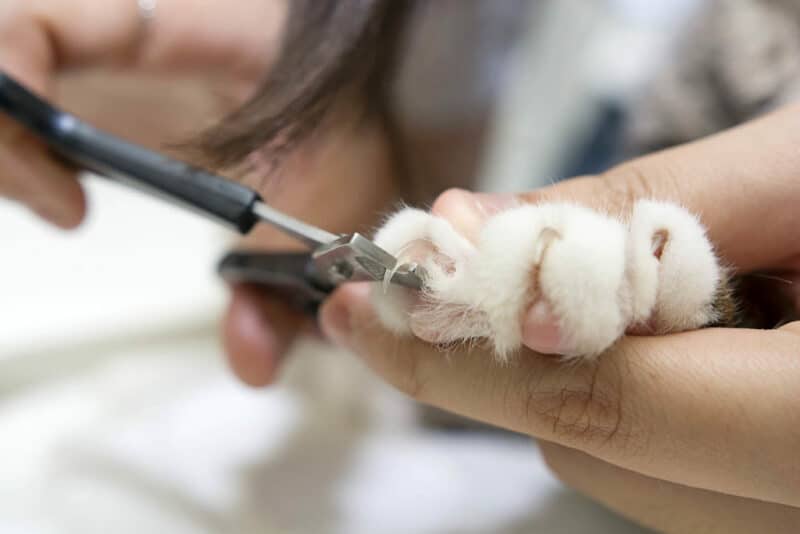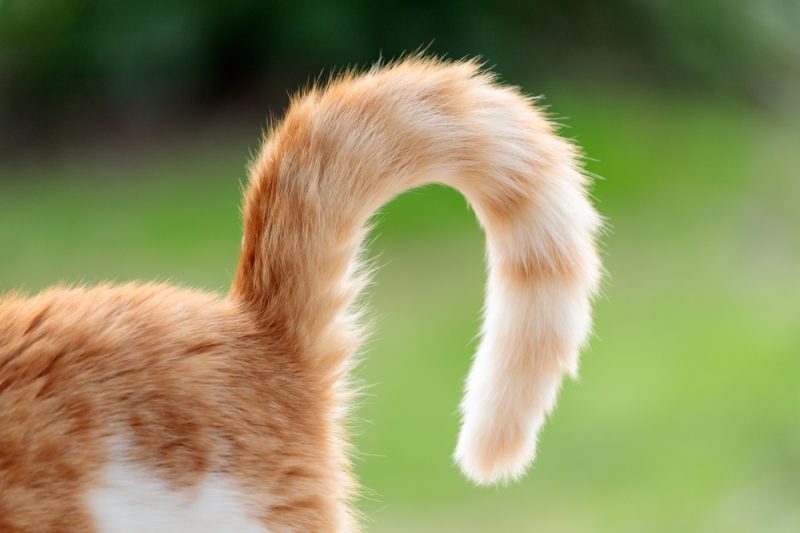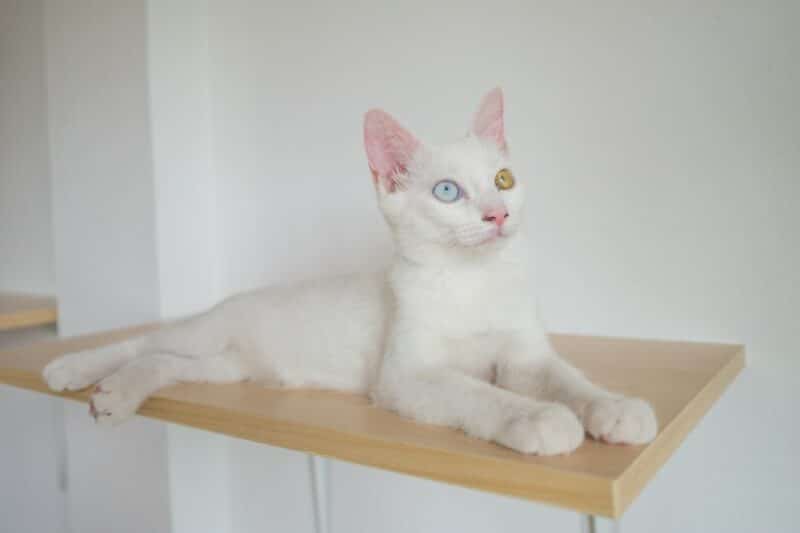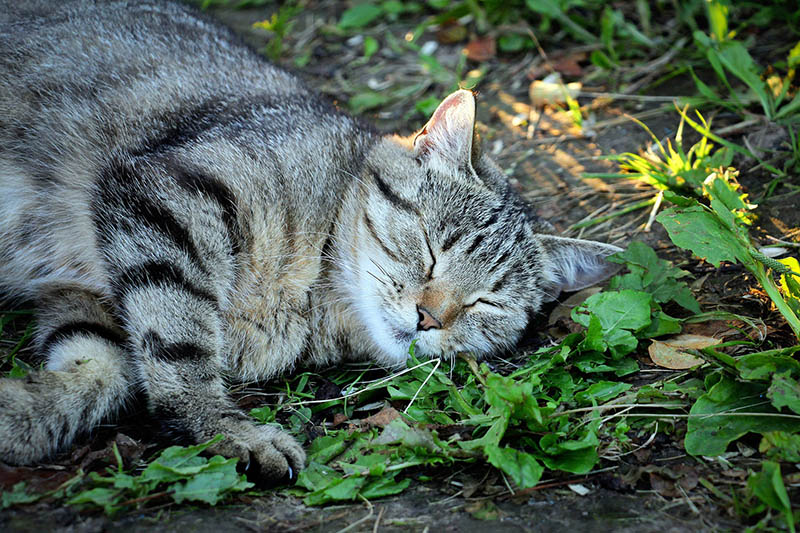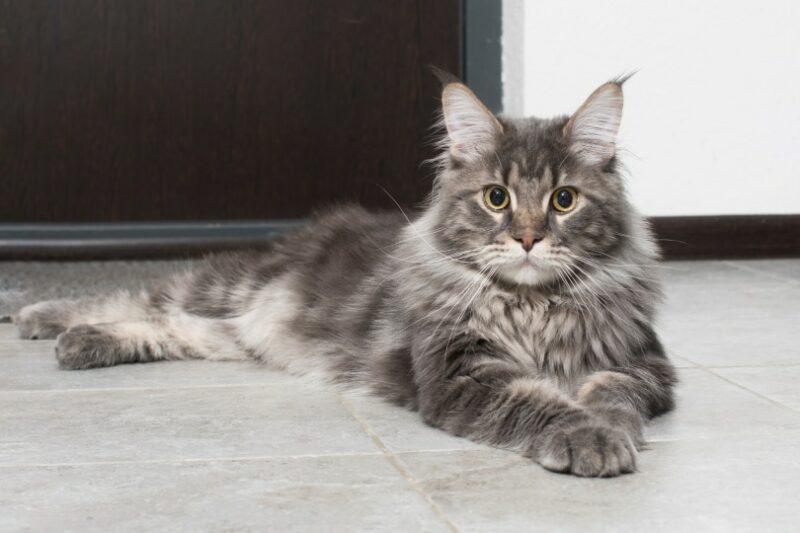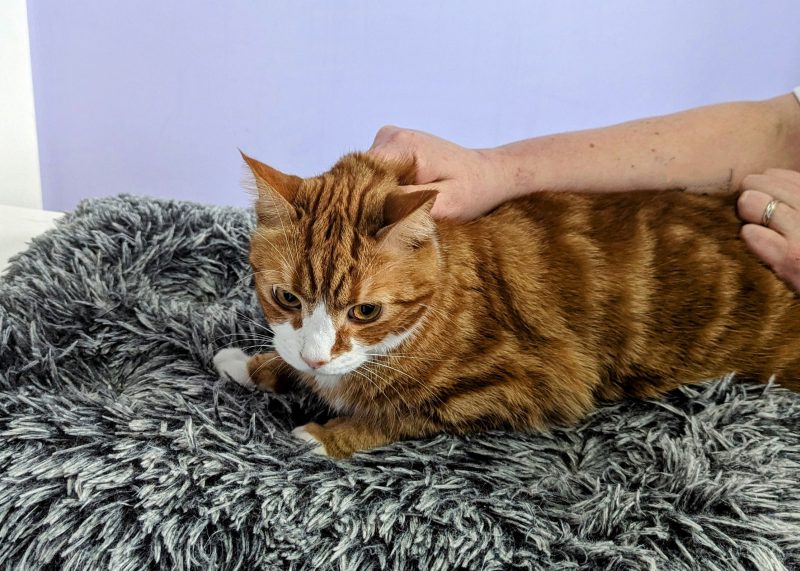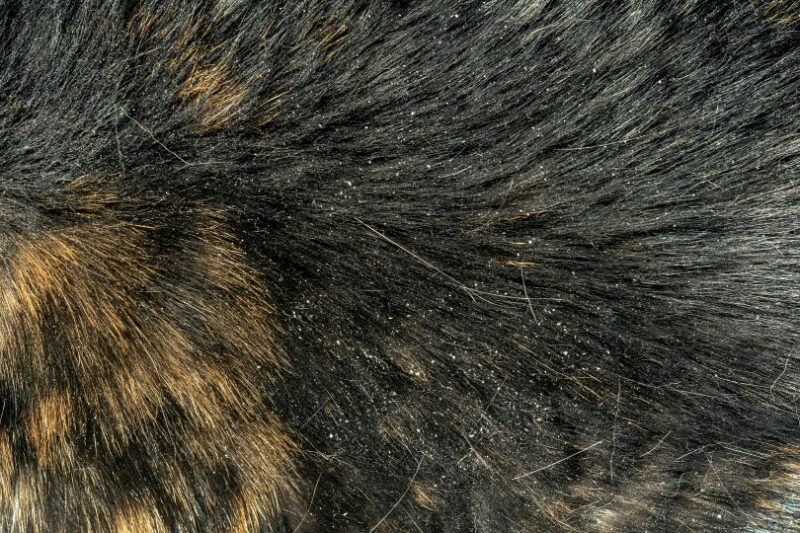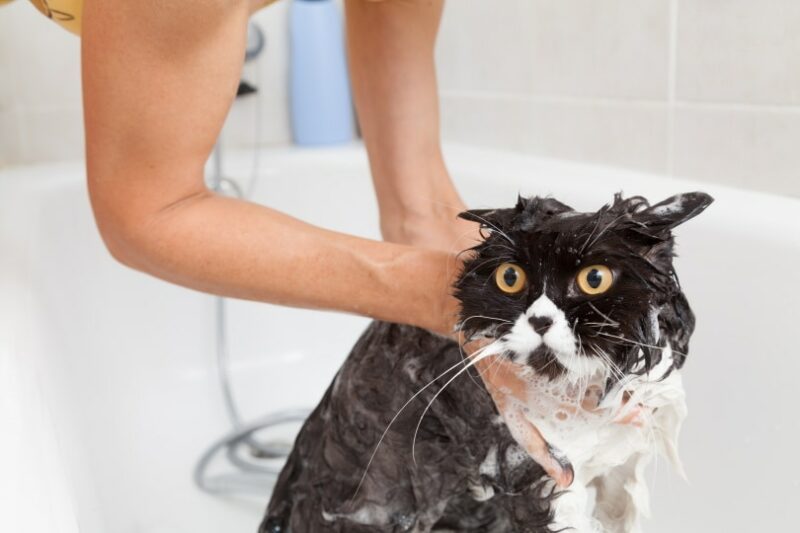In this article
Trimming a cat’s nails can be an important part of feline maintenance. Cats use their claws for hunting, defense, and balance. While they do scratch them against abrasive surfaces like trees, fences, walls, and even scratch posts, they may still need our help ensuring that nails are kept trimmed and in good condition.
However, cats’ paws and claws are delicate, and many don’t like having their feet messed with, so it can be a challenge for some owners to regularly keep on top of this bit of maintenance. If your cat is resistant to the idea of nail trimming, we have included some tips below to help make the process easier on your cat and result in less bloodshed for you.

Do You Need to Trim Your Cat’s Nails?
It’s true that wild and stray cats don’t have their claws trimmed, but they use their claws a lot more frequently for hunting, fighting, and climbing. A sharp set of talons could be the difference between eating and going hungry, escaping or being caught. Their claws naturally wear down on surfaces like trees, hard ground, and even when it attacks prey. Your cat, on the other hand, spends much of their life walking on plush carpets and soft cushions. Scratching the sisal scratch post can help remove dead bits of nail and keep their claws in good condition, but it won’t do the same job as scratching trees and other surfaces found outdoors.
Trimming helps prevent your cat’s claws from becoming overgrown; long claws can become uncomfortable and potentially even painful. They can also cause more damage to furniture, get stuck in carpets and clothing, and will hurt more if your cat catches you when playing.
If your cat spends a lot of time outdoors, you should only trim their claws if they appear to be overgrown. Otherwise, you should leave them with their natural defenses intact.
Now we know if, and why, our cats’ need a regular manicure, let’s take a look at how we can make it a smooth and painless process.
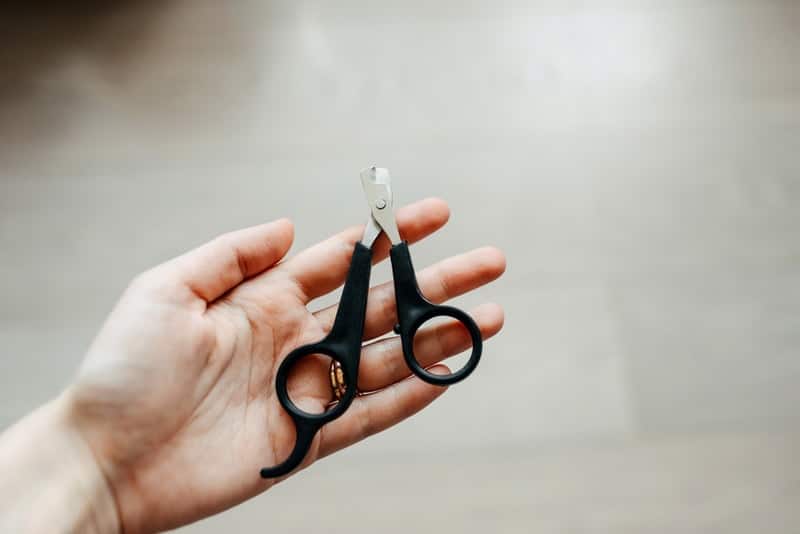
The 12 Tips to Trim a Cat’s Nails
1. Find Yourself a Trimming Buddy
If you are planning to trim the nails of a cat who is unlikely to be wholly cooperative, you should always enlist the help of someone else. Even the most agreeable cats can be wriggly and uncooperative, and you will find the process much easier when it’s two vs. one.
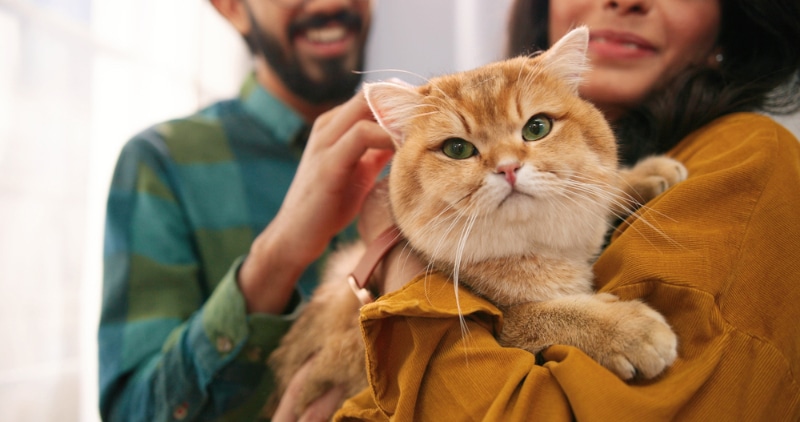
2. Get The Right Clippers
Some owners use human nail clippers to cut their cats’ claws. This can work, but you need to turn the nail clippers on their side to avoid crushing the claw. However, you should ideally use a tool that has been designed specifically for the job.
Claw scissors and clippers are available. These are usually similar to small-bladed scissors with a slightly curved and beveled blade, giving the perfect shape to carefully cut your cat’s nails. Whatever type of clippers you use, ensure they are as sharp as possible before you start cutting.
With a blunt blade, you will struggle to make a clean cut which means you have to make multiple attempts. The cat will start to struggle and you’re more likely to tear than cut the nails. Sharp blades will go straight through the nail and the trim will be finished in one cut so there is less risk of stress.
- Complete Set - These cat nail clippers include both a large and small pair, meaning it works well as...
- Razor Sharp Stainless Steel - The most comfortable cat nail clippers for indoor cats provide a fast...
- Safety First - With a safety nail guard and locking spring, you can make sure every grooming cut is...
Trimming your cat's nails at home can be hard, but having a professional do it can be expensive. With the help of great tools like Hepper's Cat Nail Clipper Set, you can easily and quickly trim your cat's nails at home. This set includes two pairs of stainless steel clippers with safety guards and locking mechanisms, plus a built-in nail file and a convenient pouch.
At Catster, we’ve admired Hepper for many years and decided to take a controlling ownership interest so that we could benefit from the outstanding designs of this cool cat company!3. Introduce Your Cat to the Clippers
The look of clippers isn’t usually what sets a cat off or causes them to distrust them. It is more likely the sound that they make when cutting. Get the clippers out and let your cat investigate them. If they sniff the clippers, give them a treat and carry on letting them investigate. Repeat the process a few times, on different days, to ensure that your cat is truly at ease around the device.
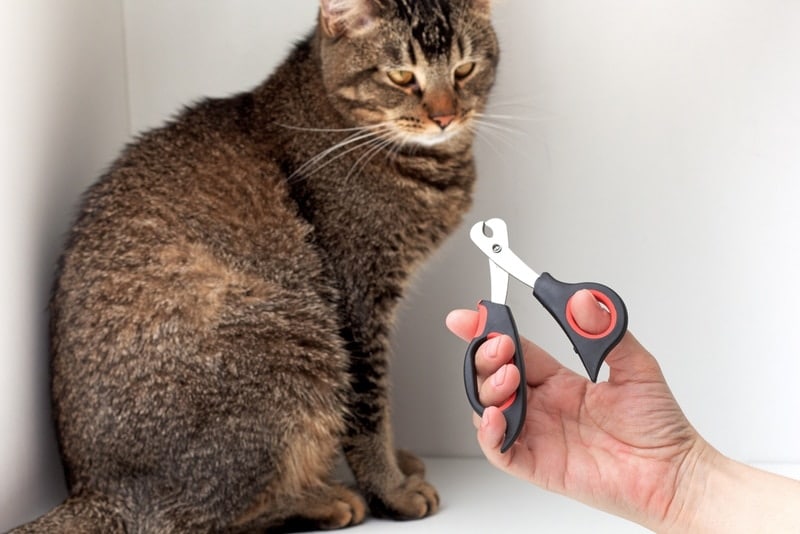
4. Desensitize Your Cat to Having Their Paws and Feet Touched
Ideally, this should start as soon as your cat joins your family. Getting them used to having their paws handled, their ears examined, and their mouth opened can make your life – and your vet’s – much easier in future. Start simply by touching their feet, playing with each toe, and gently exposing the claw. Once they are comfortable with this, try doing it with the clippers in one hand, without actually cutting the claws. If you and your kitty are happy with this step, you are ready to try the real thing.
5. Create a Calm Environment
When it is time to actually trim your cat’s nails, don’t rush it, and make sure you’re feeling calm about the whole process. Remember, if it doesn’t work out, you can walk away and try again the next day, so there is no need to fret about not getting the job finished.
If you’re stressed, it not only means you’re more likely to make mistakes and potentially cause your cat pain, but your cat will pick up on those nerves and start to feel anxious, too. Have a warm drink, sit for a while, and get everything you will need ready, so you don’t have to abandon the process halfway through just to find the cat treats.
You should also try and pick a time when your cat is calm. Ideally, do it after a naptime or after your cat has eaten. That feeling of full contentment means that your cat will be less likely to get stressed. A less stressed cat is less likely to lash out or try to get away.

6. To Swaddle, or Not To Swaddle
Most cats will actually feel more stressed by being wrapped up in a blanket – less is more, while others find it soothing. If you have a particularly feisty feline, swaddling may be the safest approach for everyone.
There are a couple of different options for the non-swaddling approach, both of which will work better with two people; a holder and a trimmer:
- On a table – one person gently restrains the cat on a table or similar surface, with one hand cupping the head in case you need to move it away from the trimmer’s hands.
- On a lap – place your cat on your lap with their back against your belly. Use one arm to restrain them, and the other to either hold the leg being trimmed, or cupping the head to keep the trimmer safe.
If your cat is highly anxious and lashes out at you with sharp claws whenever you try to trim its claws, you may need to resort to other techniques. You can make a kitty burrito by rolling your cat up in a towel, leaving just the front or rear paws available.
Bear in mind that this should be a last resort because it will likely cause stress for your cat so it will be less likely to succumb to nail clipping in the future and may start to be wary of you any time you approach with a towel in hand.
7. Use The Right Hold
Your cat will instinctively try to pull their leg away from you, and holding the limb by the paw is both ineffective, and uncomfortable for your cat. Have your holder take a firm (but not tight) grip just behind the elbow (front legs) or ankle (back legs). This is a comfortable way to stop your cat from easily tugging their paw away, and gives you much better control.
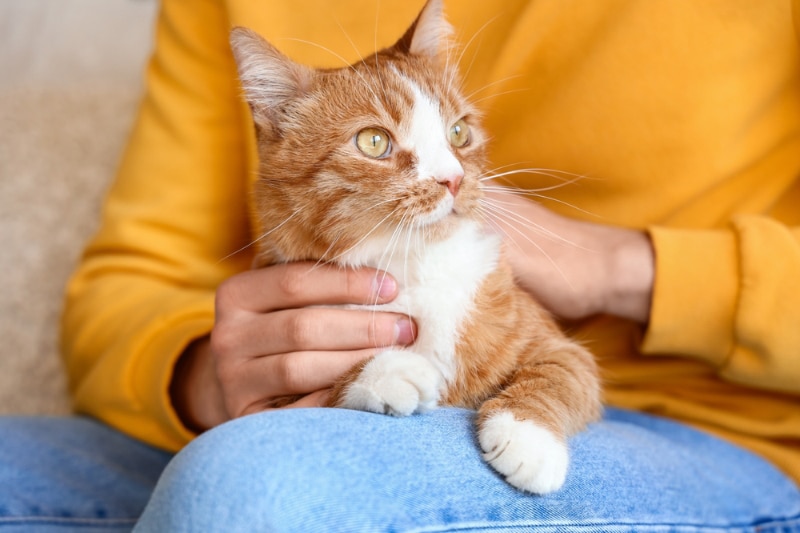
8. Don’t Crowd Your Cat
This isn’t a spectator sport, and crowds of people and backseat drivers will only make things more stressful. Cats don’t like being surrounded at the best of times, and if they sense something is afoot while a crowd surrounds them, the process will be much harder. Keep it down to you, your cat, and your assistant.
9. Do Not Cut Too Far
When it comes to the actual trimming, you ideally want to make a single cut on each nail, and you want to cut enough of the nails away so that you won’t have to repeat the process in another week. With that said, you must take care not to cut too far down. If you cut the quick, it will cause bleeding and discomfort, and your cat will be even more reluctant the next time it sees you reaching for the nail trimmers. The quick is the pink section of the nail and looks different from the rest. Don’t cut too close because the quick protrudes slightly further out in the middle of the nail. If you cannot see the quick, just take a couple of millimeters off the end of the nails; you are far better off needing to trim again in a couple of weeks, than to cut too much and lose your feline’s trust.
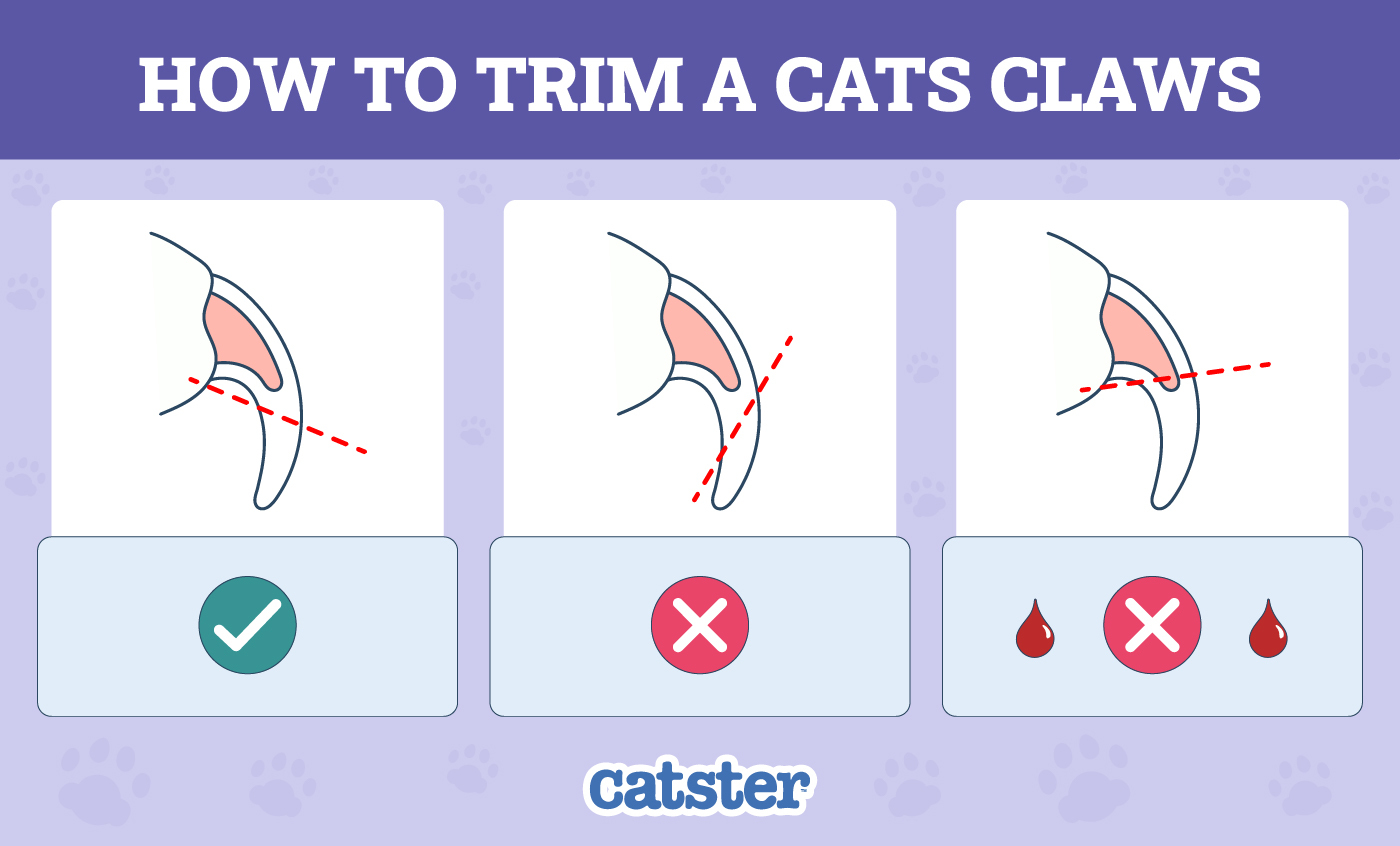
10. Do It in Stages
If you’re struggling to cut the nails and you only manage to get one or two done at a time, stop there, and come back the next day to do another nail or two. It prevents the anxiety from building up while you’re attempting to hold your cat down longer and the nails will all get cut eventually, anyway.
11. Try Stealth Trimming
Stealth trimming means waiting until your cat is asleep, ideally on your lap, and then cutting a claw. They will more than likely wake up, but if you’re quick enough they won’t register what has happened. Wait a few minutes, let them go back to sleep, and then cut the next claw. This does require a cat that sleeps deep and loves to fall asleep on your lap, and it means you have to be good at getting that first cut just right. Be careful with this maneuver however; if your cat becomes distressed with the sneak attack, it may become stressed about sleeping or sitting on your lap.
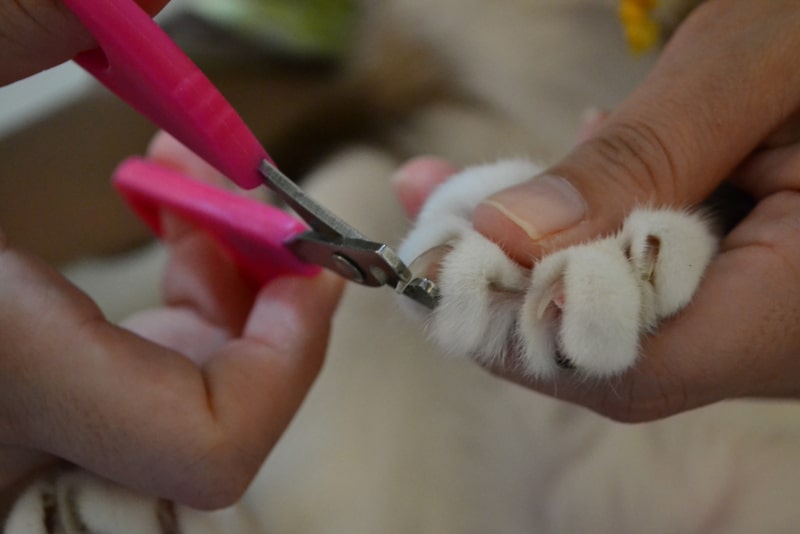
12. Call In The Professionals
If all else fails, ask your vet or groomer to trim the claws. It doesn’t usually cost much, and they have professional tools and years of experience in cat claw trimming. Obviously, it’s great if you can do it yourself because you can keep the claws trimmed without having to wait for your next appointment, but it is better than not trimming the claws at all.

Why Does My Cat Hate Having Their Nails Trimmed?
There are various reasons, but most of them stem from the fact that a cat’s paws and feet are very sensitive. They don’t like having them played with generally, and most cats will pull their paws away even if you try and stroke them. Therefore, when they feel the clippers on their claws and hear the noise of the claw being cut, it causes anxiety and, in the worst cases, sheer panic. If you use clippers that are too blunt, you can also squash the nail rather than cut it, and this squeezes the quick inside, which will be uncomfortable or painful.
How Often Should You Trim a Cat’s Nails?
Indoor cats need their nails trimmed a lot more often than outdoor cats, but even then, every cat is different. Senior cats often neglect their claws, so they need trimming more often, once a month or so. Less active cats will need a more frequent manicure, while cats that run about climbing cat trees and curtains, will likely only need a trim every few months.
Essentially, you will need to gauge how often your cat’s nails need tending to.
Do Vets Trim Cat Claws?
Vets can trim cat claws and will usually do so for a relatively small fee. If you take your cat to a groomer, they will also offer this service. This may be the only choice for an especially anxious cat and will be more effective than trying to single-handedly swaddle a cat while trimming every claw.
If your cat has an ingrown or infected claw, you should take them to the vet to be treated, as they may require pain relief and/or antibiotics.

Conclusion
Cats rely on their claws for balance and climbing as well as for hunting and defense. They, along with paws and feet, are very sensitive, so cats are often reluctant to have people, even those they trust deeply, mess around with them. But trimming a cat’s claws is important because it prevents them from overgrowing, making them less likely to injure themselves or others, as well as being less likely to damage your furniture, clothes, and carpet.
Above are 12 tips to help you trim your cat’s claws. Be prepared, get your cat used to the sensation of having their feet messed with, and be sure to avoid cutting the quick. And, if all else fails, consider having your cat’s claws trimmed by professionals.
Related Reads:
- Can You Use Dog Nail Clippers on Cats? Care & Safety Tips
- How to Trim the Nails of an Angry or Aggressive Cat (Vet-Approved Guide)
Featured Image Credit: Yimmyphotography, Shutterstock
